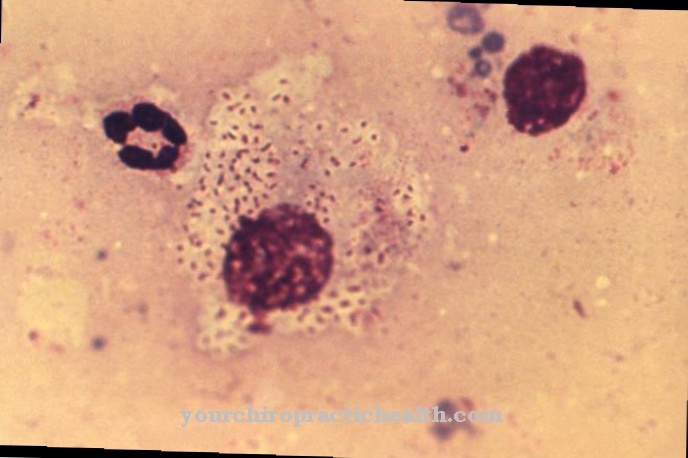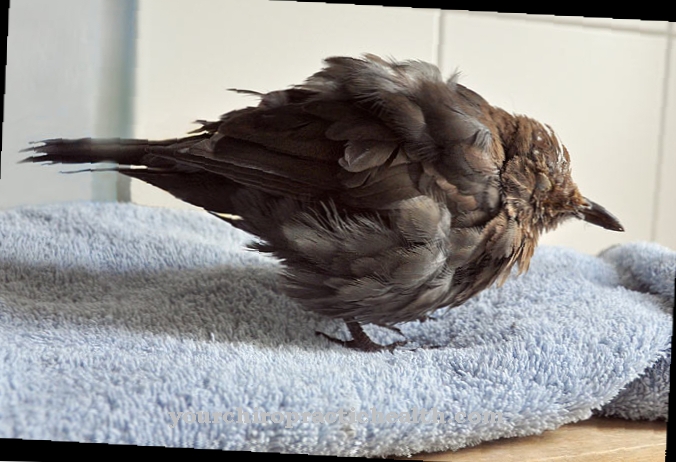Of the JC virus like the BK virus, belongs to the polyomaviruses, a group of non-enveloped DNA viruses. It occurs worldwide and is already transmitted in childhood, whereby it can persist for life. The pathogen triggers progressive multifocal leukoencephalopathy, or PML for short.
What is the JC virus?
The JC virus (short name: JCPyV) is a pathogen of the family Polyomaviridae and the genus Polyomavirus occurring worldwide. He is also called Human polyomavirus 2 or JC polyomavirus designated. Taken up in childhood, the pathogen usually reaches the kidneys or the central nervous system, and probably the leukocytes (white blood cells), where it can persist for life.
The JC virus is an opportunistic pathogen, which means that it is reactivated when the body suffers from severe immunosuppression.
The JC virus is not enveloped, so it does not have a surrounding lipid shell. This makes it more stable to environmental influences than enveloped viruses. The virus carries dsDNA as its genome, making it one of the few double-stranded DNA viruses without a lipid envelope.
The name of the JC virus comes from the initials of the patient John Cunningham, in whom the virus was first discovered in 1971.
Occurrence, Distribution & Properties
The JC virus occurs worldwide. Its infection rate is around 85 percent. Once infected with the pathogen, it remains primarily in the kidneys and the central nervous system for a lifetime. The virus is also likely to spread in leukocytes.
The infection is apparently acquired in childhood. There is a high probability that the pathogen will be spread orally. Over 60 percent of all US-Americans have antibodies against the JC virus by the age of 12. Up to this point, the infection will likely proceed without any symptoms. However, if the immune system is severely suppressed, such as in AIDS or leukemia, the pathogen can reactivate, which then destroys the infected cells and releases it into the bloodstream. There the virus then spreads to the oligodendroglial cells of the brain, where it can then destroy them as part of the disease.
The JC virus is characterized by the lack of a lipid envelope. This lack of a covering makes the virus resistant to numerous environmental influences. In this way, it usually escapes destruction through disinfection.In addition, the JC virus has double-stranded DNA and is one of the few non-enveloped viruses that have double-stranded DNA, alongside the adenoviruses, the human papillomaviruses and the BK virus.
In total, this genome consists of 5130 base pairs, which are divided into three sections. The first section forms the non-coding part where the origin of replication is located. The second region is responsible for the small as well as the large T antigen. The third and last area codes for the various envelope proteins, namely the VP1, VP2 and the VP3 pentamer. Because the non-coding regions can be rearranged, different JC virus variants arise.
The genome is surrounded by an icosahedral capsid, a protein shell that protects the virus. The viruses have a diameter of approximately 45 nm. The capsid which envelops the virus is made up of 72 capsomeres. These capsomers mainly consist of the VP1 pentamers, the VP2 or VP3 pentamers are less present in the capsid.
Illnesses & ailments
The JC virus causes progressive multifocal leukoencephalopathy (PML for short), a disease that primarily affects the central nervous system. The disease is acute and continues to develop, which is why it is called progressive. Because almost everyone carries this virus, the disease can affect everyone, but a weakening of the immune system is a basic requirement for the onset of the disease.
The first infection with the pathogen in childhood runs without any symptoms. Patients with T-cell weakness, as is the case with AIDS or leukemia, are the most common. If the viruses are reactivated, they get from the place where they persist for life, such as the kidneys, the brain or the bone marrow, via leukocytes to the central nervous system, where they implant themselves in the white matter and multiply.
They mainly attack the oligodendrocytes. These types of cells form the nerve sheaths, which surround the nerve cells in order to ensure optimal conduction of excitation. The oligodendrocytes are destroyed as a result of the disease, the nerve cells lose their nerve sheath, they are demolished. There is also an immigration of inflammatory cells, which means that demyelinating continues.
The symptoms that arise are different depending on the location. If the cerebellum is affected, motor symptoms such as a disorder of movement coordination (ataxia) are particularly noticeable. Furthermore, the PML can influence the language center. Accordingly, those affected suffer from speech disorders. If the visual or auditory pathway is affected, visual field defects or even hearing loss can occur. Later on, learning disorders, dementia and concentration difficulties as well as epileptic seizures can occur.
In addition to the failures of the central nervous system (CNS), the JC viruses have been linked to the development of some brain tumors, especially in animal experiments. It is likely that those affected have an increased risk of developing CNS tumors.

























.jpg)


